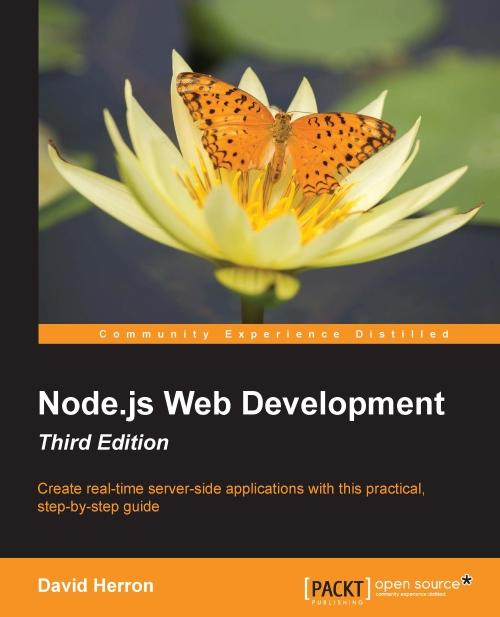Pratite promene cene putem maila
- Da bi dobijali obaveštenja o promeni cene potrebno je da kliknete Prati oglas dugme koje se nalazi na dnu svakog oglasa i unesete Vašu mail adresu.
1-1 od 1 rezultata
Broj oglasa
Prikaz
1-1 od 1
1-1 od 1 rezultata
Prikaz
Prati pretragu "id:181826013"
Vi se opustite, Gogi će Vas obavestiti kad pronađe nove oglase za tražene ključne reči.
Gogi će vas obavestiti kada pronađe nove oglase.
Režim promene aktivan!
Upravo ste u režimu promene sačuvane pretrage za frazu .
Možete da promenite frazu ili filtere i sačuvate trenutno stanje
What You Will Learn Install and use Node.js for both development and deployment Use the Express application framework Configure Bootstrap for mobile-first theming Use data storage engines such as MySQL, SQLITE3, and MongoDB Understand user authentication methods, including OAuth, with third-party services Deploy Node.js to live servers, including microservice development with Docker Perform unit testing with Mocha Perform functional testing of the web application with CasperJS Book Description Node.js is a server-side JavaScript platform using an event driven, non-blocking I/O model allowing users to build fast and scalable data-intensive applications running in real time. Node.js Web Development shows JavaScript is not just for browser-side applications. It can be used for server-side web application development, real-time applications, microservices, and much more. This book gives you an excellent starting point, bringing you straight to the heart of developing web applications with Node.js. You will progress from a rudimentary knowledge of JavaScript and server-side development to being able to create and maintain your own Node.js application. With this book you'll learn how to use the HTTP Server and Client objects, data storage with both SQL and MongoDB databases, real-time applications with Socket.IO, mobile-first theming with Bootstrap, microservice deployment with Docker, authenticating against third-party services using OAuth, and much more. Authors David Herron David Herron has worked as a software engineer in Silicon Valley for over 20 years. This includes companies both tiny and large. He has worked on a wide variety of projects, from an X.400 e-mail server and client application to assisting with the launch of the OpenJDK project (open source Java rocks), to Yahoo's Node.js application-hosting platform (Mojito and Manhattan), and applications to monitor solar power array performance. While a staff engineer at Sun Microsystems, David worked as the architect of the Java SE Quality Engineering team where he focused on test automation tools, including co-developing the AWT Robot class. He was involved in open source activities related to Java, including the OpenJDK project. Before Sun, he worked for VXtreme on software which eventually became Windows Media Player when Microsoft bought the company. At Mainsoft, David worked on a library that allowed developers to recompile Windows applications on Unix, and then participated in porting Internet Explorer to Unix. At The Wollongong Group, he worked on both e-mail client and server software and was part of several IETF working groups improving e-mail-related protocols. David is interested in electric vehicles, world energy supplies, climate change, and environmental issues, and he is a co-founder of Transition Silicon Valley. As an online journalist, he writes about electric cars and other green technology on LongTailPipe.com after having written for PlugInCars.com. He runs a large electric vehicle discussion website on VisForVoltage.org, and he blogs about other topics, including Node.js, Drupal, and Doctor Who on DavidHerron.com. Using Node.js, he developed a Content Management System that produces static HTML websites or EPUB3 eBooks, AkashaCMS (akashacms.com). Table of Contents Chapter 1: About Node.js Chapter 2: Setting up Node.js Chapter 3: Node.js Modules Chapter 4: HTTP Servers and Clients – A Web Application's First Steps Chapter 5: Your First Express Application Chapter 6: Implementing the Mobile-First Paradigm Chapter 7: Data Storage and Retrieval Chapter 8: Multiuser Authentication the Microservice Way Chapter 9: Dynamic Interaction between Client and Server with Socket.IO Chapter 10: Deploying Node.js Applications Chapter 11: Unit Testing

